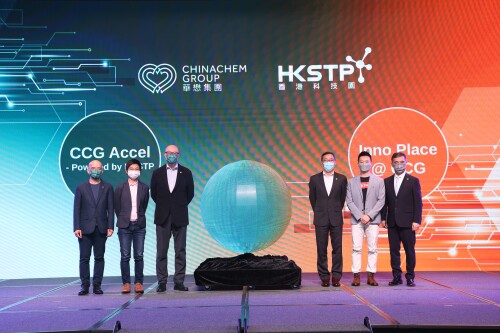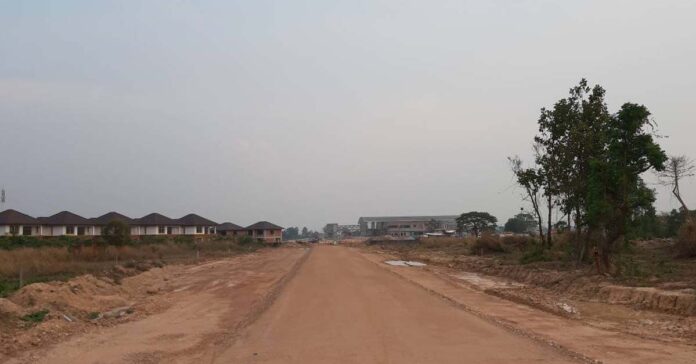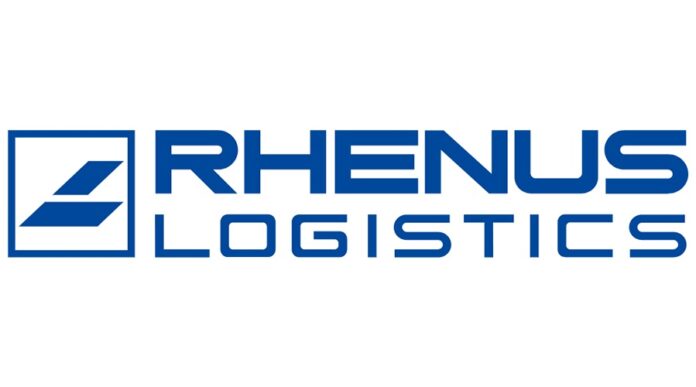Dedicated programmes to shorten the innovation to commercialisation gap, and bring Hong Kong’s cutting-edge technology closer to the community
HONG KONG SAR – Media OutReach – 29 March 2021 – Chinachem Group (the Group) and Hong Kong Science and Technology Parks Corporation (HKSTP) today announced the launch of two dedicated programmes to support startups in the smart city space and drive Hong Kong’s cutting-edge innovation.

Chinachem Group Executive Director and CEO Donald Choi (3rd left); Hong Kong Science and Technology Parks Corporation CEO Albert Wong (3rd left); Belun Technology CEO Dr Lydia Leung (2nd left); Zeek Co-founder & CSO Vincent Fan (2nd right) ; Chinachem Group Director of Digital Transformation Damien Wu (1 st left); and Hong Kong Science and Technology Parks Corporation Head of Strategic Partnership Peter Mok (1 st right), take group photo.
This partnership between the Group and HKSTP, comprises two innovative initiatives designed to nurture property and retail startups, as well as reduce the gap between innovation and market deployment.
Donald Choi, Executive Director and CEO, Chinachem Group, said, “Technology is a core driver in our business and for the property industry. We are committed to not only harnessing it to benefit our business, but to also contributing to Hong Kong’s thriving innovation and technology ecosystem. We look forward to collaborating with HKSTP to create a virtuous cycle of collaboration, innovation and commercialisation in the property sector.”
Albert Wong, CEO, HKSTP, said “With Hong Kong being an evolving urban environment, it is important we nurture innovations that support its sustainable growth. This partnership with Chinachem Group is significant as it removes one of the biggest barriers startups face, which is the gap between innovation and commercialisation. This programme reduces the time to market through our proven startup accelerator framework, together with Chinachem Group’s sector-specific expertise and properties for pilot testing.”
The first initiative under this partnership is the “CCG Accel – Powered by HKSTP” programme, which will be a pioneering pilot-first accelerator programme aiming to propel high potential startups through a pilot-to-mass adoption process. The programme features a series of three themed accelerator cohorts run by both the Group and HKSTP. Each cohort will have a different theme and provide extensive training, mentorship and support for up to 10 shortlisted startups. In addition to financial contribution, the Group will offer its experience to help these startups shape their solutions and trial their solutions at designated properties prior to general adoption. Startups will also benefit from promotion through HKSTP’s network and its value-added services. The first cohort will begin by Q3 2021. Further details of the cohorts including the themes will be announced in due course.
The second initiative is the “Inno Place @CCG” programme which pioneers a “Living Lab” concept that breaks away from traditional innovation labs where the testing of solutions is restricted to a fixed physical lab space. The programme will see the opening up of Chinachem’s network of properties as “Innovation Places” where selected innovations are trialed, starting with NINA MALL in Tsuen Wan. This real-world environment will allow startups to pilot and refine their solutions, while users can immediately benefit from them.
Successful innovations from the two programmes may be further adopted or invested in by the Group. Meanwhile, HKSTP will provide its expertise and knowledge in innovation and technology commercialisation. This includes providing support in technology solution sourcing, validation, hosting small scale proof-of-concept pilots, as well as identifying co-investment opportunities with HKSTP and its investment partners.
This builds upon existing technology by innovators from the Science Park that have already been adopted by Chinachem Group in its properties. These include Titanology, innovator of a self-sanitising door handle; Enertainer, a high-capacity battery system offering a cleaner and quieter alternative to diesel generators commonly used on construction sites; and ACX, a developer of secure building access solutions.
The Group and HKSTP also share a vision to foster the growth of Smart City, bringing technology innovated, designed and made in Hong Kong, closer to the community at designated Chinachem Group properties. This includes a showroom to feature the smart city concept, as well as a place to host technology talks, hackathons, and product launches.
About Chinachem Group
Since 1960, Chinachem Group has been a leading property developer in Hong Kong, with a portfolio covering residential, commercial, retail and industrial buildings for sales and investment, in addition to operating hotels and property management services. The Group actively seeks to make a positive contribution to society through its adherence to the “Triple Bottom Line”, a commitment that its activities will benefit People, bring Prosperity to the community and preserve the Planet.
https://www.chinachemgroup.com/en
About Hong Kong Science and Technology Parks Corporation
Comprising Science Park, InnoCentre and Industrial Estates, Hong Kong Science & Technology Parks Corporation (HKSTP) is a statutory body dedicated to building a vibrant innovation and technology ecosystem to connect stakeholders, nurture technology talents, facilitate collaboration, and catalyse innovations to deliver social and economic benefits to Hong Kong and the region.
Established in May 2001, HKSTP has been driving the development of Hong Kong into a regional hub for innovation and growth in several focused clusters including Electronics, Information & Communications Technology, Green Technology, Biomedical Technology, Materials and Precision Engineering. We enable science and technology companies to nurture ideas, innovate and grow, supported by our R&D facilities, infrastructure, and market-led laboratories and technical centres with professional support services. We also offer value added services and comprehensive incubation programmes for technology start-ups to accelerate their growth.
Technology businesses benefit from our specialised services and infrastructure at Science Park for applied research and product development; enterprises can find creative design support at InnoCentre; while skill-intensive businesses are served by our three industrial estates at Tai Po, Tseung Kwan O and Yuen Long. More information about HKSTP is available at www.hkstp.org.











